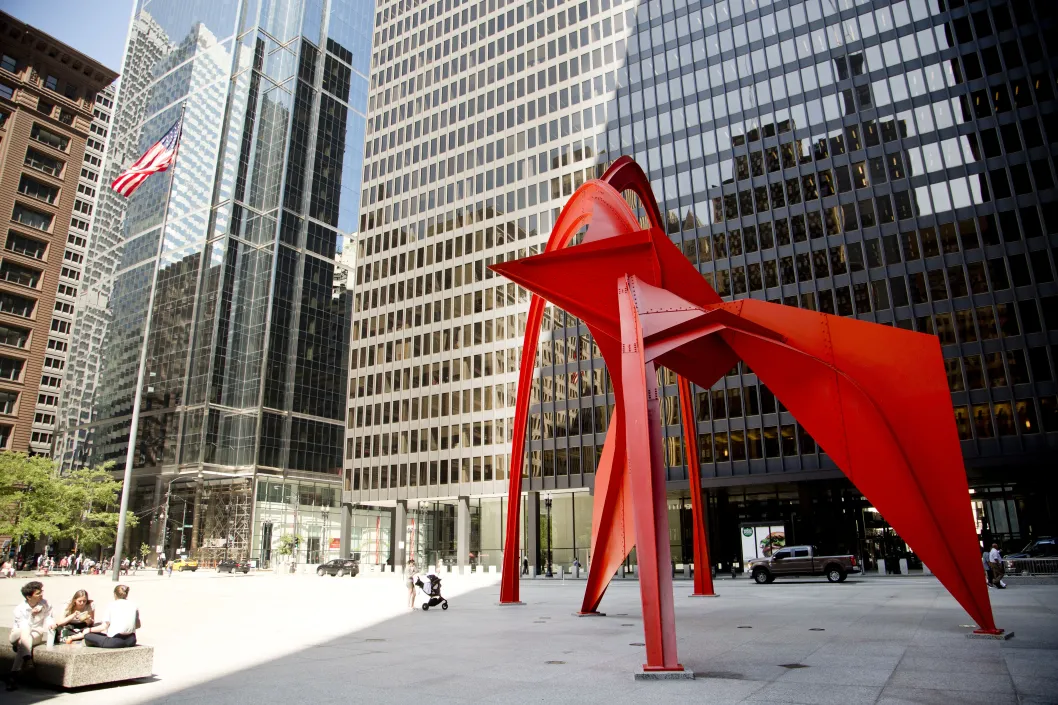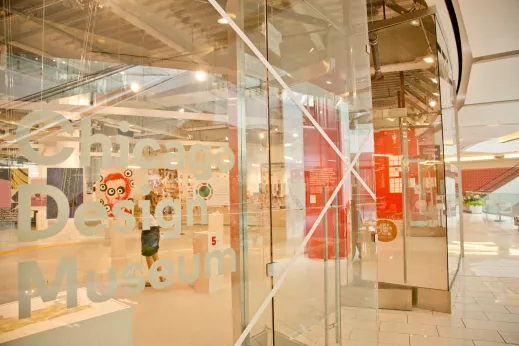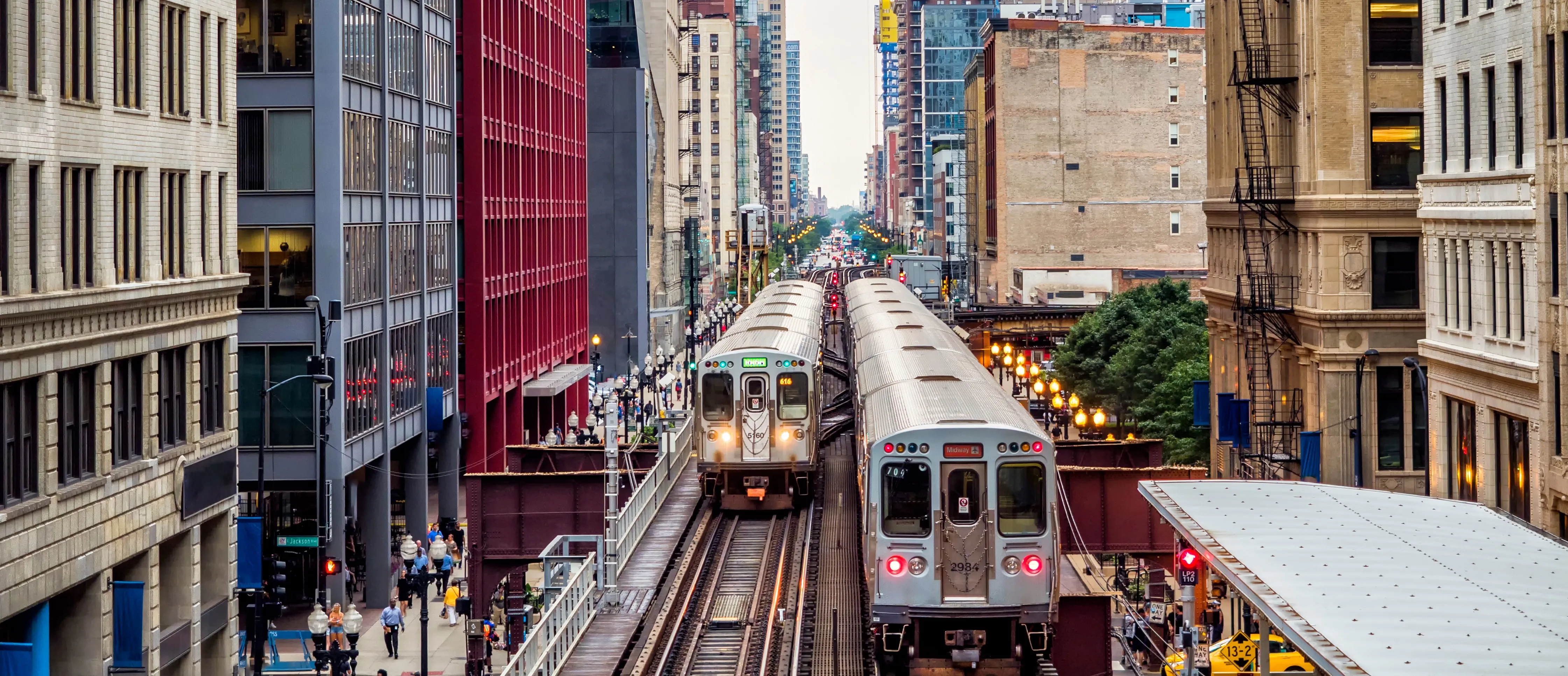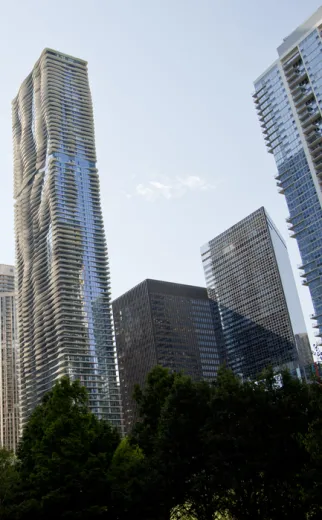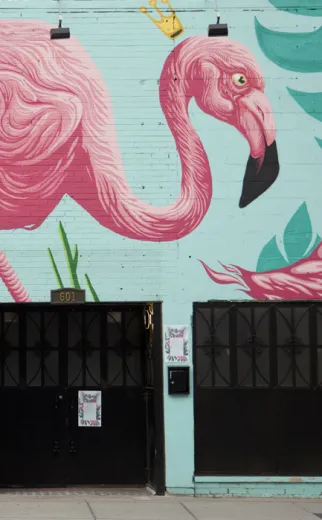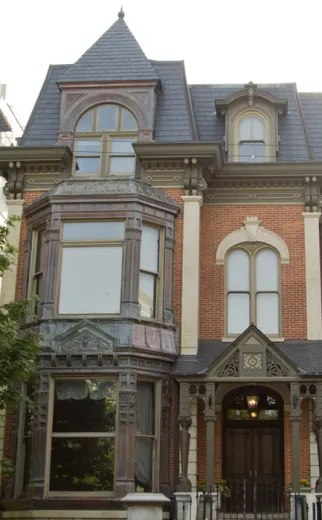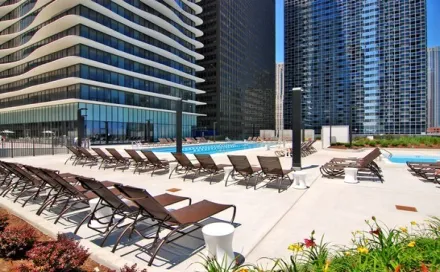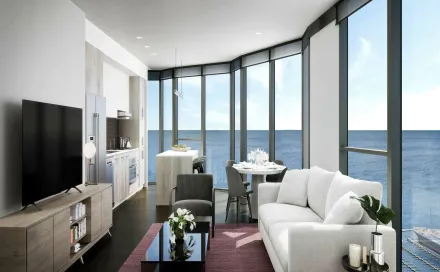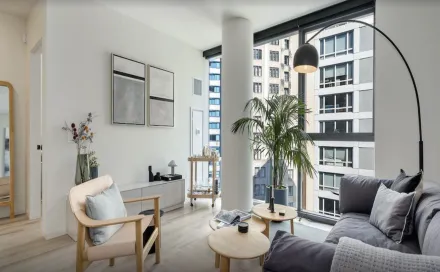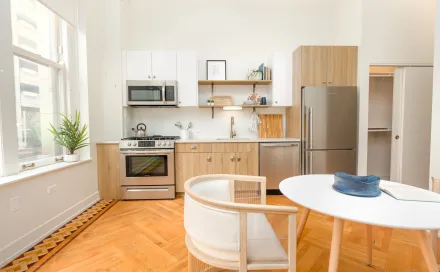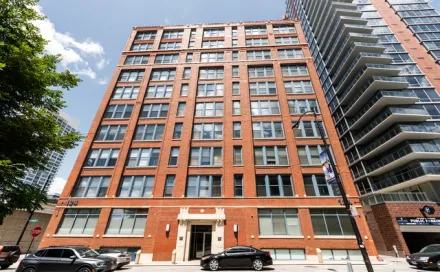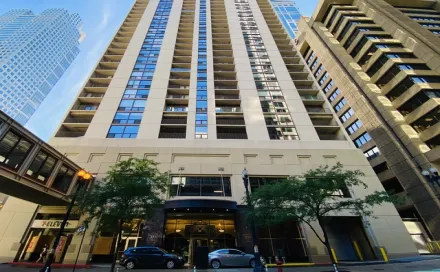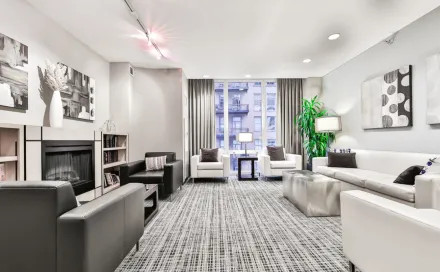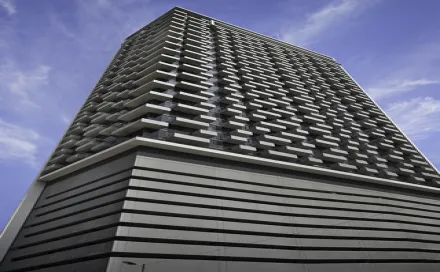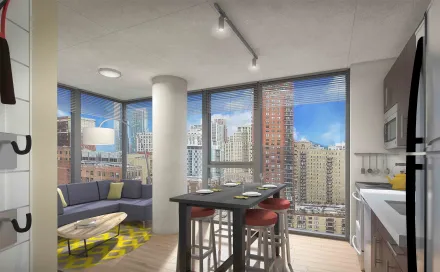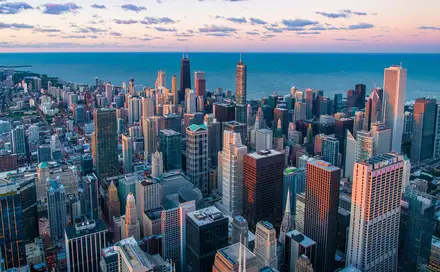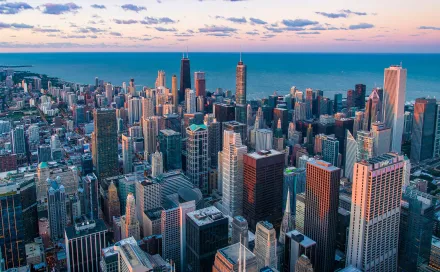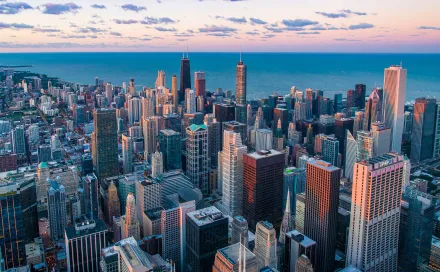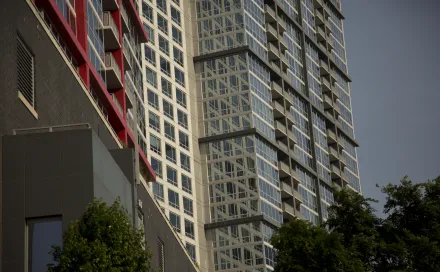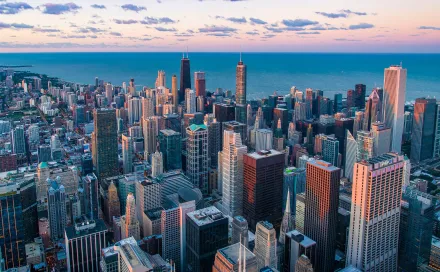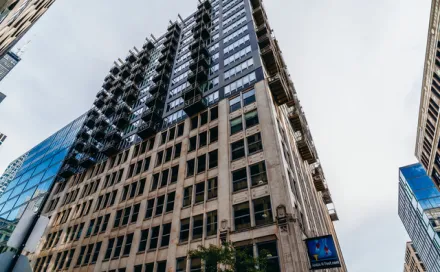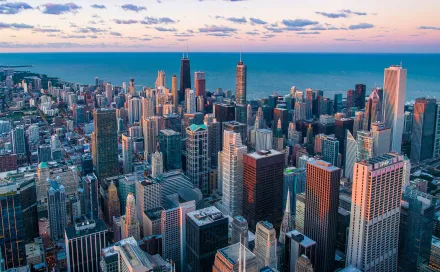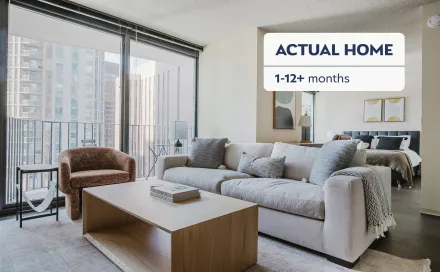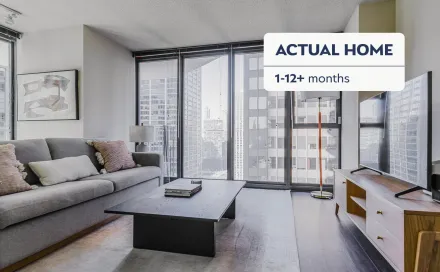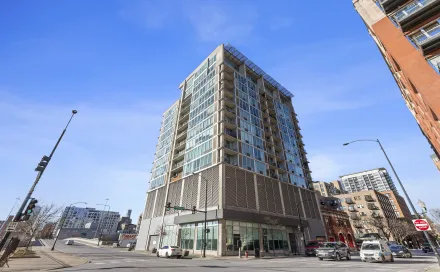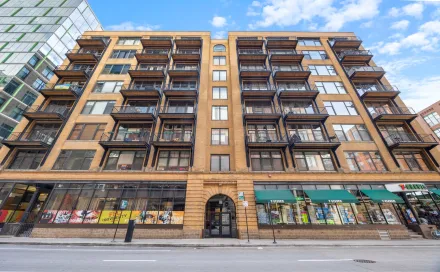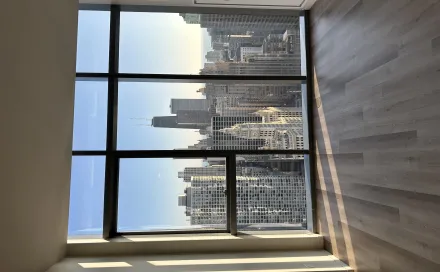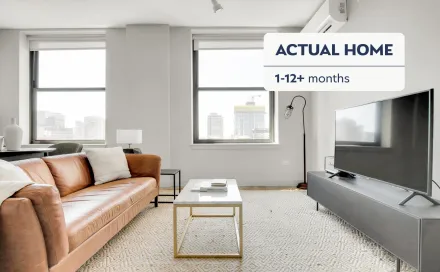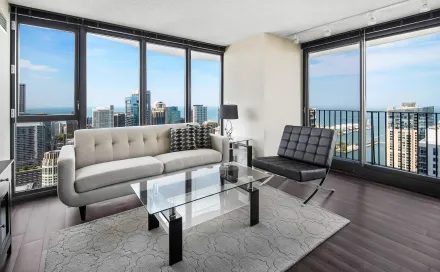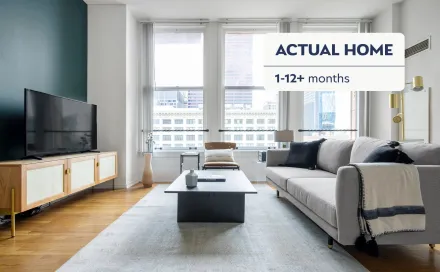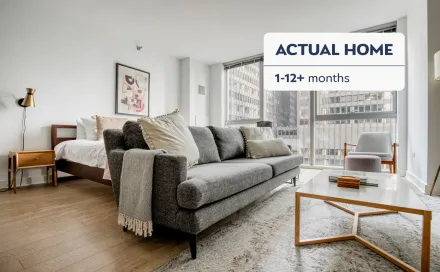Chicago Loop Apartment Living

Neighborhood Vibe
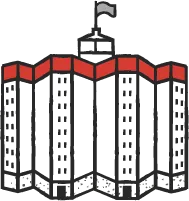
Heart of the Neighborhood
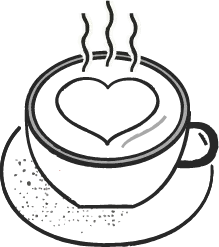
What We Love Most
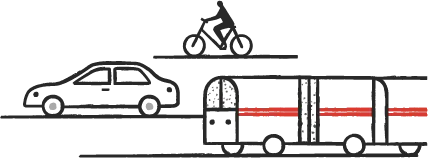
Best Way to Get Around
Find Chicago Loop Apartments
| Find Chicago Loop Apartments | |
|---|---|
|
Studio in Chicago Loop
Average Rent
|
$1.9k-
3.2k
|
|
1 Bedroom in Chicago Loop
Average Rent
|
$2.2k-
3.9k
|
|
2 Bedroom in Chicago Loop
Average Rent
|
$3.1k-
5.3k
|
|
3 Bedroom in Chicago Loop
Average Rent
|
$4.0k-
5.1k
|
|
4+ Bedroom in Chicago Loop
Average Rent
|
$8.3k
|
Around the Neighborhood
Overview of the Chicago Loop
If you live in the Loop, you basically have a VIP pass to the city. You're surrounded by world-class architecture, from the historic Rookery Building to the Art Deco Chicago Board of Trade. Cultural heavyweights like the Art Institute and Chicago Symphony Orchestra are your neighbors. The food scene is unparalleled, with everything from grab-and-go lunches to fancy dinners with a view at Cindy's.
But it's not all high-brow stuff, the Loop has a playful side, too. Millennium Park helps you forget that you’re surrounded by a concrete jungle. The Chicago Riverwalk is like the neighborhood's personal beach, minus the sand. And there are enough art shows, community events, meetups, and spontaneous dance parties that your weekend calendar will be jam-packed.
Sure, living here means you might have to dodge a few tourists now and then, but it also means you're at the center of it all. From impromptu street performances to hidden speakeasies, the Loop's always has a surprise up its sleeve. It's a neighborhood that never sleeps, but trust us, you won't want to miss a minute of it.
Location of the Chicago Loop
Boxed in by the Chicago River on the north and west, Lake Michigan to the east, and Ida B Wells Drive (formerly Congress Parkway) to the south, the Chicago Loops puts you smack dab in the middle of it all.
Demographics of Chicago Loop
Despite what guidebooks might say, the Loop isn't just for tourists (and office workers). About 40,000 people call this bustling neighborhood home, and that number's on the up and up. You'll find a mix of young professionals hustling to make their mark, empty nesters trading suburban life for urban excitement, and students burning the midnight oil (and probably a lot of coffee). The median age hovers around 32, so you're looking at a pretty youthful crowd. It's the kind of place where you might bump into a tech startup CEO, an art student, and a retired couple all in the same elevator.
Income-wise, it's on the higher end, no surprise, given the prime location and amenities. That said, the Loop has a range of living options. You'll find everything from cozy studio apartments perfect for the solo city explorer to luxury penthouses with views that'll make your friends weep with envy.
The Loop's also becoming more family-friendly, with a growing number of schools and kid-centric activities popping up. So don't be surprised if you see strollers navigating the sidewalks alongside briefcases and backpacks.
Weather in Chicago Loop
Chicago weather is... let's say, spirited.
Summers in the Loop are what Chicagoans live for. From June to August, temperatures usually dance between the 70s and 80s. It's perfect for outdoor movies in Millennium Park, strolling along the Riverwalk, or sipping cocktails on a rooftop bar. Just be ready for the occasional heatwave that'll have you hugging your AC unit.
Fall is the Loop's time to shine. September and October bring crisp air and a palette of reds and golds to the city's trees. It's ideal for exploring the neighborhood on foot, maybe with a pumpkin spice latte in hand. Just pack layers, as temperatures can swing from T-shirt weather to jacket season in a single day.
Winter is when Loop living separates the tough cookies from the crumblers. December through February can be brutal, with temperatures often dipping below freezing. Snow is a given, and the wind whipping between skyscrapers can make it feel even colder. This is when you'll become best friends with the Pedway system, that maze of underground tunnels connecting buildings.
Spring in the Loop is like a surprise party; you never know quite when it'll show up, but you'll be thrilled when it does. March and April can be a mixed bag, with a lingering winter chill one day and a glimpse of summer the next. May usually brings more consistent warmth and the first al fresco dining opportunities of the year.
And let's talk about that wind! The Loop can feel like an inescapable wind tunnel at times, especially near the lake. In winter, it'll have you waddling like a penguin to stay upright. In summer, it's nature's air conditioning. One quirk of Loop living is that Lake Michigan likes to play weatherman. It can cool things down in summer and warm things up (slightly) in winter. It also means you might see the fog rolling in dramatically, giving the skyscrapers an eerie, movie-like quality.
Amenities in Chicago Loop
Local Shopping and Dining Options
The Loop is a shopper's paradise and a foodie's dream come true. State Street, the historic shopping corridor, is home to Macy's flagship store in the landmark Marshall Field's building. For a one-stop shop, head to Block 37, a multi-level mall with everything from clothing to tech gadgets. There are also many well-known brands like Nordstrom Rack, TJ Maxx, UNIQLO, and Anthropologie, mixed in with independent businesses like Sandmeyer’s Bookstore, Jugrnaut, and Optimo Hats.
Foodies, prepare for sensory overload. For a fancy night out, try the Marq, for some delicious pub food there’s Elephant & Castle, and if you’re in the mood for sushi, you can’t go wrong with Umai. Whatever you do, don't miss out on the Chicago classics like deep-dish pizza at Giordano's or a Chicago-style hot dog at Gobble Doggs.
Nightlife in Chicago Loop
When the sun goes down, the Loop lights up. Catch a Broadway show at the Cadillac Palace Theatre or laugh your socks off at Drunk Shakespeare. For drinks with a view, head to the Raised, an urban rooftop bar. Jazz lovers shouldn't miss Buddy Guy’s Legends, or a fun night out at Jazz Showcase, a Chicago institution.
Entertainment and Recreational Activities
Beyond the theaters and music venues, there’s Millennium Park's free summer concert series and outdoor film screenings. Throw down a picnic blanket, gather your friends, and enjoy the show! Speaking of shows, if you love art, there’s a plethora of galleries a short walk away. The Art Institute of Chicago is a world-renowned museum with an extensive collection of Impressionist and Post-Impressionist works. The Museum of Contemporary Photography has some great shots by even greater photographers, and if you want to stay outside, stroll along the Wabash Arts Corridor and gaze at all the beautiful murals.
Fitness buffs, fear not. The Chicago Riverwalk is perfect for jogging or cycling, and there are numerous gyms and yoga studios scattered throughout the neighborhood.
Parks in Chicago Loop
The Loop has some of Chicago's most iconic green spaces. Millennium Park, a 24.5-acre urban oasis, is home to the famous Cloud Gate sculpture, the Frank Gehry-designed Jay Pritzker Pavilion, and the interactive Crown Fountain. Its Lurie Garden showcases Illinois' native plant species in a sustainable 5-acre setting. Just south lies Grant Park, aptly nicknamed "Chicago's front yard." This 319-acre expanse houses the magnificent Buckingham Fountain, hosts major events like Lollapalooza, and connects to the Museum Campus.
For family-friendly recreation, Maggie Daley Park offers 20 acres of innovative play spaces, including a unique Play Garden and a quarter-mile Skating Ribbon. Rock climbing enthusiasts can test their skills on the 40-foot climbing walls, while golf lovers can enjoy the 18-hole mini-golf course with Chicago-themed holes.
Museums in Chicago Loop
The Chicago Loop has enough museums to keep a curious mind busy for weeks. The crown jewel is undoubtedly the Art Institute of Chicago, where visitors can lose themselves in centuries of masterpieces. Just down the street, the Chicago Cultural Center offers a rotating smorgasbord of free exhibitions in a building so gorgeous it's worth visiting for the architecture alone. Money talks at the Federal Reserve Bank's quirky Money Museum, while the Chicago Architecture Center is a dream come true for skyscraper enthusiasts.
The Spertus Institute dives deep into Jewish culture and history, and the Museum of Contemporary Photography showcases captivating images that'll stick in your mind long after leaving. Literature buffs can geek out at the American Writers Museum, while history and military aficionados will find their niche at the Pritzker Military Museum & Library. For a unique perspective on the city, the McCormick Bridgehouse Museum offers an inside look at Chicago's famous movable bridges.
And let's not forget the museum trifecta just outside the Loop - the Field Museum, Adler Planetarium, and Shedd Aquarium - a holy trinity of natural wonders that could easily eat up a whole day or three.
Transportation in Chicago Loop
The Chicago Loop is the Grand Central of Chicago, minus the fancy clock.
Access to Highways
While you're smack in the middle of downtown, you're not far from the open road. I-90/94 (Kennedy and Dan Ryan Expressways) are just a few blocks west, and Lake Shore Drive hugs the eastern edge of the Loop. You can be cruising out of the city faster than you can say "road trip."
CTA Bus Routes in Chicago Loop
Buses in the Loop are everywhere. Major routes include the 3, 4, 6, 20, 56, 60, and J14. These'll get you north, south, east, or west without breaking a sweat. Download a transit app and you'll never have to wonder when the next bus is coming.
Metra Train Stops in Chicago Loop
If you’re a commuter, this is the neighborhood for you. Millennium Station (Metra Electric and South Shore Line), Ogilvie Transportation Center (UP-North, UP-Northwest, UP-West), and Union Station (BNSF, HC, MD-N, MD-W, NCS, SWS) are all within the Loop or just a stone's throw away.
Distance to Downtown and Other Notable Locations
Here's the kicker - you ARE downtown. But let's talk specifics:
- Magnificent Mile: 1 mile north
- Wrigley Field: 5 miles north
- United Center: 3 miles west
- Museum Campus: 1.5 miles south
- O'Hare Airport: 18 miles northwest
- Midway Airport: 11 miles southwest
Parking Options and Availability
Parking in the Loop is about as easy as finding a quiet spot during Lollapalooza. Street parking is limited and metered, so your best bet are parking garages and lots, which are plentiful but can be pricey. Many apartment buildings offer parking for residents, but that will also cost you. The upside is that with all the transit options, you might find you don't need a car at all.
In the Loop, your feet might be your best transportation option. The neighborhood is super walkable, and you'll discover something new on every block.
Schools and Higher Learning Institutions in Chicago Loop
Public, Private, and Charter School Options
Public Schools:
- South Loop Elementary School (Pre-K to 8): Known for its diverse student body and strong academic programs.
- Jones College Prep High School: A selective enrollment high school that consistently ranks among the best in the state.
Private Schools:
- British International School of Chicago, South Loop (Pre-K to 12): Offering an international curriculum for the global citizens of tomorrow.
- GEMS World Academy (Pre-K to 12): Another international school with state-of-the-art facilities.
Charter Schools:
- Chicago Virtual Charter School (K-12): Perfect for those who prefer a blend of online and in-person learning.
- Perspectives/IIT Math & Science Academy (6-12): STEM-focused education in partnership with Illinois Institute of Technology.
University, College, and Others Higher Learning Institution Options
The Loop is basically one big campus, with options that'll make your brain do backflips:
- DePaul University Loop Campus: Offering a wide range of undergraduate and graduate programs right in the heart of downtown.
- Columbia College Chicago: For the artsy folks - music, film, theater, you name it.
- Roosevelt University: Known for its social justice focus and impressive vertical campus.
- Robert Morris University Illinois: Specializing in business and technology programs.
- School of the Art Institute of Chicago: World-renowned art and design school, literally steps away from the Art Institute itself.
- Harold Washington College: Part of the City Colleges of Chicago, offering two-year degree programs.
- John Marshall Law School: For those looking to add "Esq." to their name.
- Illinois Institute of Technology: Downtown Campus: Focusing on technology and business programs.
Whether you're looking to send your kids to school or thinking about hitting the books yourself, the Loop has you covered from ABCs to PhDs. With all these great options, your biggest challenge might be choosing which one to attend!
Local Events in Chicago Loop
The Loop pulses with energy year-round and regardless of what you’re into, there’s such an eclectic mix of experiences that everyone has something to do. In fact, it’s more likely that you’ll have to schedule days for staying home and doing chores or finishing that book rather than worrying about finding plans outside your new apartment.
From the soul-stirring melodies of the Chicago Blues Festival in June to the dazzling holiday magic of the Christkindlmarket in winter, the Loop's calendar is packed with unforgettable moments. Food enthusiasts can savor their way through Chicago Gourmet in Millennium Park, while art aficionados won't want to miss the cutting-edge EXPO Chicago at Navy Pier. The Chicago Marathon in October transforms the streets into a thrilling spectacle of human endurance, and summer nights come alive with free concerts at the gorgeous Jay Pritzker Pavilion.
For those seeking more offbeat experiences, keep an eye out for pop-up art installations, underground music gigs, and quirky food truck festivals that often surprise and delight locals and visitors alike. Whether you love experiencing new cultures, spoiling your tastebuds, or just looking for a good time, the Loop's event scene promises to keep your social life brimming with excitement and new discoveries throughout the year.
Real Estate in Chicago Loop
Overview of the Real Estate Market
As Chicago's central business district transforms into a 24/7 live-work-play destination, demand for residential properties has skyrocketed. The market offers a mix of converted historic buildings and sleek new high-rises, with everything from simple studios to luxurious penthouses. Prices might be higher than in other parts of the city, but the Loop offers unparalleled access to fantastic amenities, cultural hotspots, and incredible transportation, all within walking distance.
If you're feeling unsure or have questions about the rental process in Chicago, check out our “Moving to Chicago” guide. It's full of useful information to help you navigate the rental market with confidence.
Rental Rates and Popular Housing Styles
In the Loop, you'll find a wide range of rental options for various tastes and budgets. Cost-conscious renters might consider studios, which typically range from $1,900 to $2,400 per month, providing an affordable entry point to this bustling neighborhood.
For those seeking more space, one-bedroom apartments average between $2,200 and $2,900 monthly, while two-bedroom apartments generally command $3,300 to $3,900. If you’re a couple working from home or open to having roommates, three-bedroom apartments usually waver between $5,100 and $6,400, and those ever-elusive four-bedrooms come in at $7,500+.
High-end seekers will find luxury apartments in the Loop pushing past $5,000 per month, though they come with premium amenities and breathtaking city views.
Now, these are average rates and can fluctuate based on factors like location within the Loop, building amenities, how recently the unit has been updated, and even the time of year you are looking to move. Before you start daydreaming about that penthouse apartment with a rooftop pool, do yourself a favor and check out Domu’s Rent Calculator. It will help keep your budget in check and save you the time (and pain) of being ‘home-poor.’
Also, don't forget to factor in potential additional costs like parking (if you're brave enough to have a car in Chicago) and utilities. Our article on expected costs to rent an apartment in Chicago will help dial in the expenses that go beyond monthly rent.
Popular Housing Styles Include:
- Converted lofts in historic buildings: Renters love the exposed brick, high ceilings, and industrial chic vibes of these apartments. Perfect for throwing parties and showing off to your friends.
- Modern high-rise apartments: These come packed with amenities like fitness centers, roof decks, and stunning city views.
- Boutique condo buildings: For those seeking a more intimate living experience with high-end finishes. While not often as tall as skyscrapers, they are usually just as luxurious.
- Mixed-use developments: Combining residential, retail, and office spaces for the ultimate urban lifestyle. Maybe you want an apartment above a café? Or to take an elevator straight into your favorite gym? If so, these would be your bread and butter.
Popular Apartment Buildings in Chicago Loop
- NEMA Chicago: A 76-story skyscraper with resort-style amenities and breathtaking views.
- OneEleven: Sleek and modern with a prime riverside location.
- The Legacy at Millennium Park: Luxury living with direct access to the park.
- 235 Van Buren: Known for its unique stepped design and affordable luxury.
- Marquee at Block 37: Connected to the Block 37 retail center for ultimate convenience.
- Century Tower: A beautifully renovated historic art deco building.
- 215 West: Offering a mix of renovated and modern units with park views.
Conclusion
Living in the Loop puts you front and center in Chicago. From world-class cultural institutions to cutting-edge dining experiences, from historic architecture to modern skyscrapers, the Loop offers a lifestyle that's hard (if not impossible) to match. Sure, it comes with a higher price tag and the occasional tourist asking for directions, but for those who crave the energy of city living, it's worth every penny.
Ready to make the Loop your home? Domu is here to help you find your perfect spot in this exciting neighborhood. With our up-to-date apartment listings, rental resources, and neighborhood guides, you can move beyond reading about Chicago life and start living it! Your new urban adventure is just a click away!
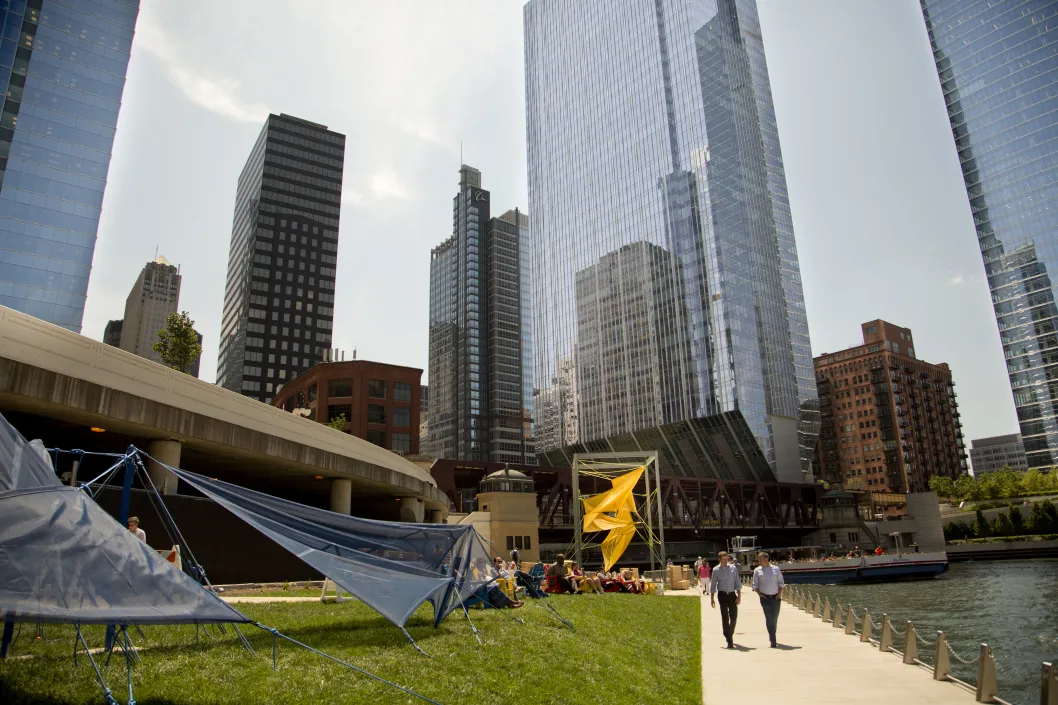
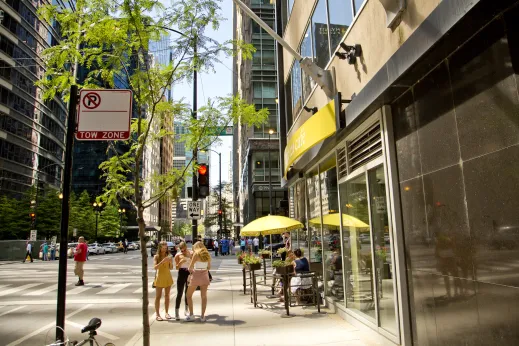
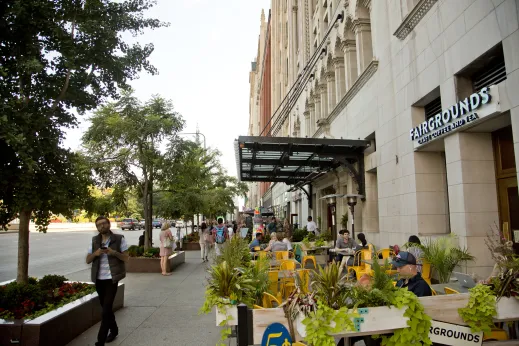

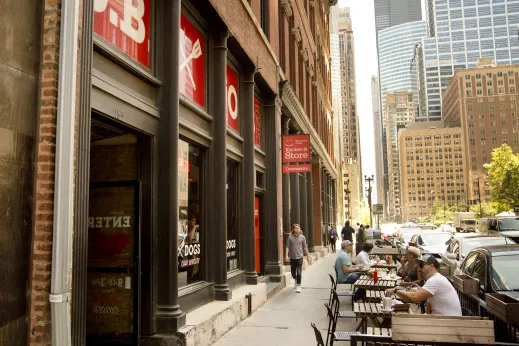
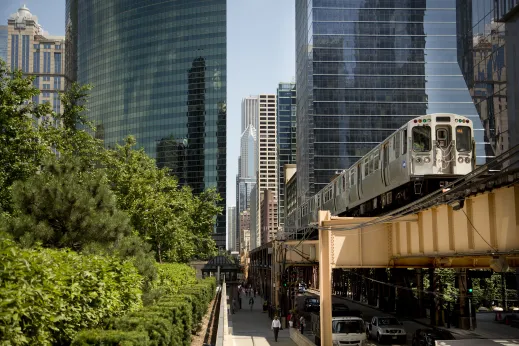
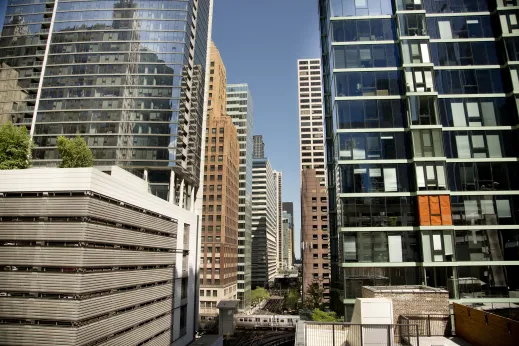
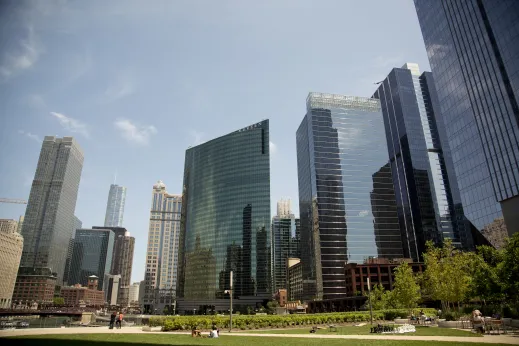
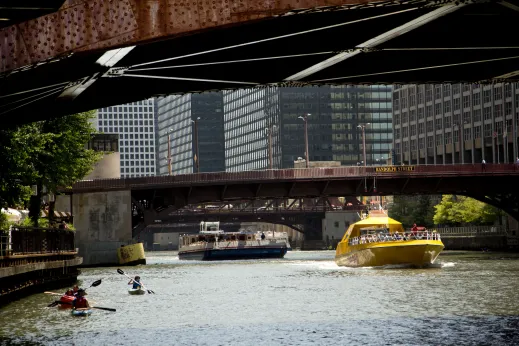

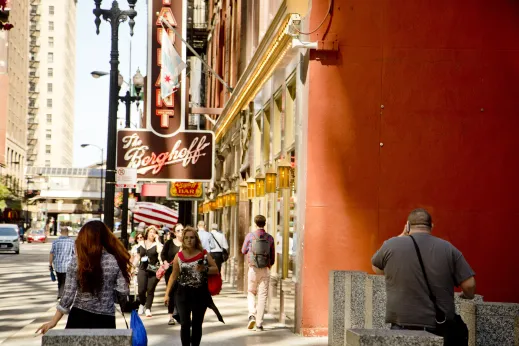
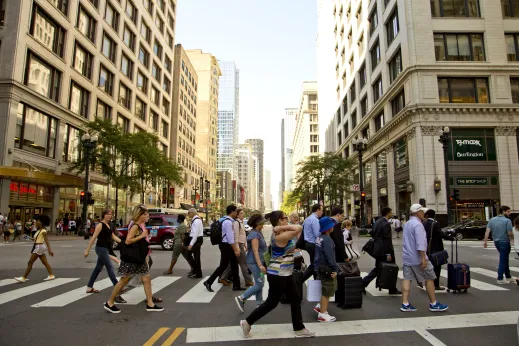
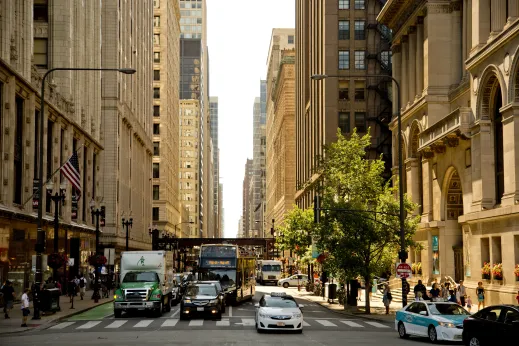
History in The Chicago Loop
The Chicago Loop has come a long way since its 1830s trading post days. The Great Fire of 1871 could have been the end, but instead, it kicked off a rebuild that turned the Loop into the beating heart of one of America’s greatest cities. From the ashes rose a neighborhood that would become synonymous with reaching for the sky, literally.
In the late 19th century, the Loop became a hotbed for bold ideas in city planning and construction. The Home Insurance Building, built in 1885, pioneered new heights and techniques, earning the title of the world's first modern skyscraper. This ambition would come to define Chicago's iconic skyline and prove that Chicagoans don't just dream big; they build big, too.
For those who don’t know, the reason why this area is called “the Loop” is because of the elevated train tracks that started circling the area in 1897. This "loop" of rails turned this neighborhood into Chicago's hottest ticket, bringing in folks from all over the city.
Over the years, the Loop has seen more drama than a season of Chicago Fire. It partied hard in the Roaring '20s, tightened its belt during the Great Depression, and suited up for the post-war boom. Each era left its mark like rings on a tree, but instead of bark, we have some of the coolest buildings and cultural spots in the country.
And the Loop's not done yet! From the funky Picasso sculpture in Daley Plaza to Millennium Park (where a parking lot became selfie central), the Loop keeps Chicago on its toes and having fun.
